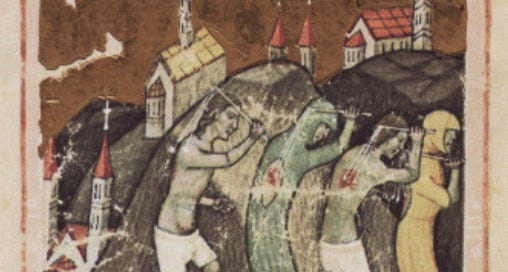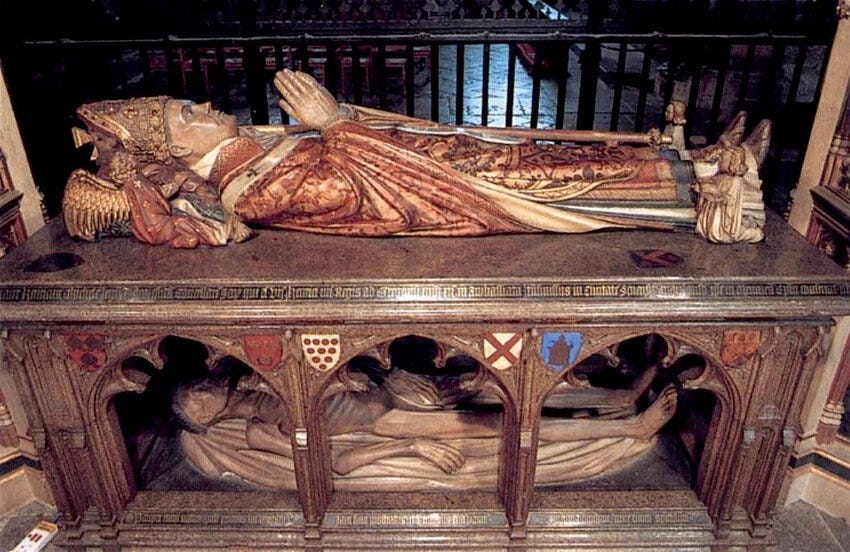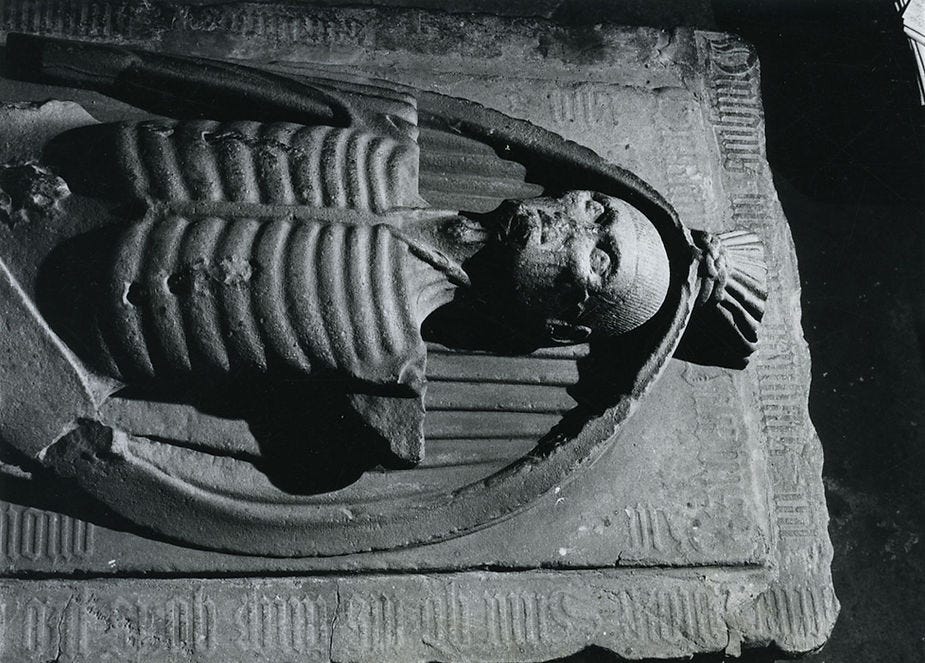The “world right now… *sigh*” is muttered a lot at the moment. As if we are living on the precipice of Doom, with the fiery lava of hell licking our heels as the world gets hotter and Trump squeezes back into the White House. There is a palpable anxiety that the world is really in trouble.
It is times like these that being a historian comes in useful (a rare experience, I might add). Amidst the panic historians are, generally speaking, a bit more chilled. We are able to reflect on the age of anxiety during the early 60s, as nuclear war felt imminent during the Cuban Missile Crisis. Some historians might also consider the general vibe after World War I (it was not a good one), which was instantly followed by Spanish Influenza, a pandemic that wiped out a generation of young people who were already broken by global conflict.
Yet I look back further, to the fourteenth century and 1348 when the first wave of plague, later named the Black Death, wiped out up to fifty percent of the Europe and beyond. There were MANY comparisons to the Black Death during the 2020 Covid Pandemic — I wrote about how we STILL fear it here — but the truth is, it is entirely incomparable. In the mid fourteenth century people really did learn to live in the face of likely and imminent death, as they watched their loved ones and so many they knew succumb to a faceless killer.
We know an impressive amount about how the Black Death happened (possibly more than we currently know about the origins of Covid19), but what has always interested me is how people felt about it and how they responded when the world appeared to be ending.
There is little evidence that survives around how people immediately responded so we have to look carefully and ‘read between the lines’ of what has. Wills that were enrolled in London during the height of plague smack of fear, not for oneself, but mostly for loved ones, with a significant uptick in donations to the church for the preservation of the souls of the dead — aka ensuring they had a place in heaven. Some people even invested all they had into their communities, looking to help those who shared their small world, above assuring their own spiritual security.
This devastation was largely considered to be Divine punishment and some people appeared to lose their minds, riddled with shame for their own sins and those of human kind. Penitence was a serious undertaking in the Middle Ages (and beyond) and in 1349 it got really serious when the flagellants started to move about Europe. These were a group of men who moved place to place, wearing only a small loin cloth around their hips whilst ritually whipping themselves and chanting. These whips were purpose made (flagellants had their own DIY whip) and little shards of thorn, or glass were tied onto multiple leather thongs to make the whole experience extra bloody and painful.
More practical measures for security also took place. In Cambridge (where I live) a person buried a chest of 1800 silver and gold coins, presumably fleeing plague and hoping to return to their wealth. They never did return. These coins were eventually unearthed while workers were digging a sewage pipe on Chesterton Lane in Cambridge in 2000 and are now held in the Fitzwilliam Museum. When researching my new book on the fourteenth century I found myself returning to this chest of coins at the Fitz, pondering the fate of the person, or people, who buried it. A time capsule of sorts. When I stare at these coins all I see is panic, fear and uncertainty. Someone’s world turned upside down.
Evidence of how people felt about a world so imbued with death did not truly surface until much later in the century. Artistic responses began to appear in the 1380s and 90s, but it was into the fifteenth century that we truly see a generation traumatised by loss. Death is everywhere, as is the cult of memento mori, meaning ‘remember you will die’. The Danse Macabre became a potent image that circulated in manuscript culture: an almost satirical depiction of the dead dancing with the living — carefree, joyful and hedonistic.
Perhaps the most haunting example of memento mori was the transi tombs that appeared during the fifteenth century. Above was the usual stone cadaver, a lifeless but human form. Beneath, as if below ground, was a corpse, riddled with worms and half decayed. Maybe this scene of decay even had impact into the sixteenth century when William Shakespeare wrote Mercutio’s eponymous dying line in Romeo and Juliet; “they have made worms' meat of me”.
The Black Death was the original ‘generational trauma’, its hangover (and the actual infection) being a bleak reality of life into the seventeenth century and beyond. It was an ever present spectre of memento mori.
When I am asked the question (which I often am), “what time would you go back to?” my answer remains the same — “I wouldn’t go back”. Despite the awfulness of human kind in the present and the terror we witness, we are fortunate to be alive now.









